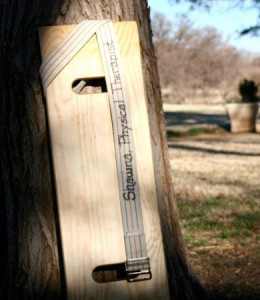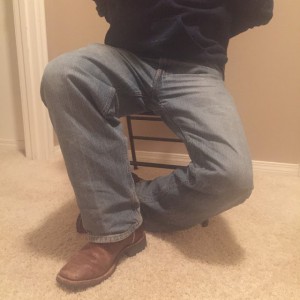A BRIDGE to OUT-OF-BED MOBILITY
I absolutely LOVE using a sliding board when my patient desperately wants to be able to move from his/her wheelchair into a recliner, the seat of a car, or the bed, but is not able to weight bear on the legs or has had an amputation of the leg(s). Sliding boards are literally a BRIDGE between two surfaces! There are different styles, dimensions, compositions and functions of medical transfer boards.
desperately wants to be able to move from his/her wheelchair into a recliner, the seat of a car, or the bed, but is not able to weight bear on the legs or has had an amputation of the leg(s). Sliding boards are literally a BRIDGE between two surfaces! There are different styles, dimensions, compositions and functions of medical transfer boards.
STYLES (DYNAMIC vs STATIC)
Dynamic boards have a groove and a disc that moves in the groove. I have used both a dynamic and static board for car transfer training and most of my patients preferred the static board. However, if my patient is not able to scoot or is difficult to scoot, the dynamic board is a great option.
I use static boards more often than dynamic boards because they are just a versatile and I always say, “the less moving parts, the less likely something will break.” Dynamic boards have a groove and different things can fall into the groove–especially if there are small children in the home that like to play and have access to tiny barbie accessories, food, transformer parts–stopping the disc from moving along the grooved track. However, static boards are one SOLID piece and don’t have a track or groove.

Static Sliding Board
DIMENSIONS
There are boards that are shorter, wider, and have cutouts. Bariatric transfer boards are designed to accommodate up to 600 pounds. Shorter, standard boards accommodate between 200-500 pounds depending on the material (wood, plastic) and width. Before ordering a board be sure to read the description and weight capacity to ensure the board meets your needs. As a Home Health Physical Therapist, I train and treat patients of various weights so I have a bariatric board.
COMPOSITION
Plastic and wood (oak, birch, yellow pine) with cut-outs or without cut-outs are your options for a medical transfer board. Oak is heavier than yellow pine, birch and plastic. Depending on the length and width, oak is a very hardwood and durable. I personally recommend wood transfer boards over plastic for several reasons.
-
Increased resistance during sliding–especially if the patient is wet (just showered or has been sweating).
-
Less hardy to extreme temperature variations (had a patient who used his board for car transfers and left the board in a hot car and the board “softened” enough to flex/bend resulting in a weakened board integrity and forced controlled descent to the ground).
-
Occasional decreased patient confidence. I use to use a plastic board that was thinner (I never left in my car) and stopped using the board because several patients said, “I don’t trust the plastic to hold me–I am too afraid–even though you (referring to me the P.T.) tell me it’s safe!”
I demand equipment that is: versatile, stable, and functional in a variety of situations! Therefore, I prefer the wood-based transfer board over the plastic.
FUNCTION
There are specific boards designed for the toilet and bathtub! The PORTABLE BATHTUB TRANSFER BOARD and BEASY’S BATHROOM
transfer boards are specifically designed for easy toilet and tub transfers. However, if the environment, patient and equipment are properly set up for success, a standard board can be used to access the tub transfer bench, shower chair, BSC, and existing toilet.
I have had patients that prefer to keep a board in the bathroom and have a separate board in the bedroom/living room. Having two or more boards–especially if the patient will require a board for an extended period of time–decreases the need to carry/hold the board in the wheelchair going from room to room, and limits water associated with bathing/toileting from leaving the bathroom.
I am an affiliate with Ebay because my transfer board would have cost me $69 from a local medical supply. However, I was able to purchase my bariatric transfer board on Ebay for $30–cheaper than both Amazon.com and a local medical supply store–with FREE shipping! I love the price and the options offered on Ebay.
SAFETY/USE
There are some basic safety tips that make using a sliding board easier.
-
Make sure the wheelchair is positioned at a 45º degree angle to the surface you are going to transfer to/from.
-
Make sure the wheelchair brakes are SECURELY LOCKED and remove the armrest/footrest of the wheelchair if the wheelchair is equipped with removable or swing-away armrest/footrests.
-
Position the board securely under the hip (I recommend the board under 3/4 to 1/2 of the buttocks).
-
Look at the knees before, during and after sliding and make sure the knees are directly above the ankles and the feet are flat on the floor. Never, let the knees look like this picture. Try this position. You will quickly discover you will easily slip to the floor in the direction of the leg where the ankle is NOT under the knee (The Left Leg in this picture).

Unsafe Knee Position
-
As a caregiver, you can prevent forward sliding by using your hands or knees on your loved ones’ knees to push backwards while he/she is sliding on the board. If you have control of the knees, you have control of the hips!
-
Finally, look at the other end of the board — the end that indicates where the transfer will end– and make sure it is placed EXACTLY where you want your loved one to end up! Where the board ends is where your loved one will end up. Here’s a video demonstrating a sliding board transfer.
Sliding boards are versatile and literally a BRIDGE between one surface and another when you want/need to transfer a loved one that either cannot stand up (has an amputation, is not able to bear weight on the legs due to surgery/wounds) or cannot help during the transfer (has dementia, suffered a stroke).
I hope you learned something and if you have a questions or comments, please feel free to contact me! I am dedicated to making daily home care easier and safer.
Sincerely,

